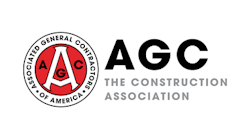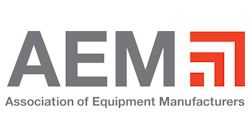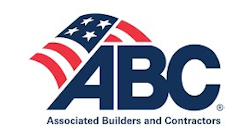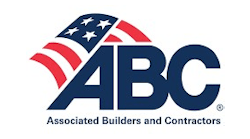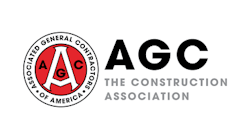Arguably the most dangerous construction task, trenching has received special scrutiny from OSHA for over 30 years, particularly since OSHA revised its trench and excavation standards in 1989.
Judging from government records of excavation incidents—and from the standpoint that one fatality is one too many—the problem appears not to be getting any worse, but efforts to reduce fatalities from cave-ins have not been completely successful.
The Bureau of Labor Statistics reports that fatalities from excavation or trenching cave-ins did decline from 39 in 2004 and 2005 to 22 in 2006, compared with a 14-year high of 55 in 1996. Meanwhile, overall injuries in construction increased from 963 to 1,126 between 1992 and 2003, with a high of 1,265 in 2001—no doubt due largely to more construction activity during this period. Still, an OSHA directorate of construction 2003 trenching survey indicates that contractors may consider cave-in precautions overly burdensome.
For example, the survey reviewed 34 federal case files of trenching fatalities and found that in 25 cases in which information was available, protective systems such as trench boxes or shields were not used in 19. In 21 of 32 cases, the excavation depth was 5 to 9 feet. Fully 72% of companies in which fatalities occurred were in business for 10 years or more and 81% of the fatalities occurred in companies with fewer than 50 employees. Also, an analysis of 17,422 OSHA trenching violations from 1999 to 2004 reveals that 35.6% involved protective systems and 14.1% were due to a lack of inspection of the excavation by a competent person.
There is no getting around the fact that work that necessitates a worker in an excavation is inherently dangerous. Trying to maximize productivity without taking the necessary safety precautions is a temptation for contractors that can have disastrous consequences. The odds of a fatality resulting from a cave-in are very high, due to the weight of the material that fills the excavation, while the odds of a rescue are remote due to the lack of time the worker has to regain enough oxygen to breathe.
Keith Lamberson, president of Trench Shoring Services, which consults with and rents shoring equipment to contractors from distribution centers throughout the country, indicates that trenching work will always be inherently dangerous and that the responsibility for safety rests with the contractor. “Eventually, an open excavation is going to cave in; we don’t have the opportunity to pick the time and place,” he says. “That potential is there 100% of the time. It certainly increases when you have vibration present at the job site that gets soil particles moving and certainly, the potential increases when you have water. You might have a ready-mix truck with 10 yards of concrete turning the drum and somebody at the other end with compaction equipment working, beating the ground and getting those particles in motion, so it’s pretty much a given that it’s going to cave in.
“OSHA says this: Cave-ins are predictable, cave-ins are preventable; therefore, cave-ins are not an accident,” Lamberson continues. “You see after a fatality from a cave-in that there’s very high emotion and people say, ‘It was so unexpected and it was such a surprise; we can’t believe this happened.’ But it was predicated that it would happen—all the indications were there. There wasn’t any surprise.”
Although the OSHA trench and excavation standards should represent the minimum safety requirements, a review can be helpful.
The Standards
The federal safety standards that govern excavations, including trenches, are covered in 29 CFR Subpart P 1926.650 through 1926.652.
Subpart P 1926.650 (scope, application and definitions) defines an excavation as any man-made cut, cavity, trench, or depression in an earth service formed by earth removal. A trench or trench excavation is a narrow excavation (in relation to its length) made below the surface of the ground. In general, the depth is greater than the width, but the width measured from the bottom is no greater than 15 feet.
Subpart P 1926.651 contains specific requirements for excavations, including locating underground utilities beforehand, ingress and egress to and from excavations deeper than 4 feet, atmospheric testing to ensure respiratory safety, the availability of emergency rescue equipment when atmospheric tests warrant it, daily excavation inspections by a competent person, and protection from loads lifted by digging or lifting equipment.
Subpart P 1926.652 (requirements for protective systems) calls for the use of protective measures, such as sloping and benching and other protective systems—except when a competent person has examined the excavation and determined that no potential for a cave-in exists and the excavation is 4 feet deep or less, or is in stable rock.
Appendix A of the standard categorizes soil types and assists in the design and use of appropriate protection systems. Soils are categorized by compressive strength, from Type A clays to lower-compressive-strength Type C material that is granular or submerged in, or freely seeping water. Several methods are available for categorizing soil types, including a thumb penetration test, use of a hand-operated shearvane or use of a pocket penetrometer.
Appendix B (sloping and benching) provides guidance for maximum allowable slopes given soil type and excavation depth.
Appendix C (timber shoring for trenches) includes tables with timber-shoring-member sizes and configurations for use in various soil types.
Appendix D provides guidance for use of aluminum hydraulic shoring systems in excavations in various soil types.
Appendix E contains alternatives to timber shoring, including aluminum hydraulic shoring systems, pneumatic/hydraulic shoring, trench jacks (screw jacks), and trench shields. This appendix includes drawings of each type.
Appendix F pulls together the information above into a decision flowchart that assists the contractor in selecting the proper OSHA-complaint protective system given the specific job-site attributes.
Resources and Equipment
Several manufacturers offer protective systems that aid the contractor’s safety compliance efforts. Shoring systems are designed to compact the excavation walls from collapsing in the first place. Shielding systems protect workers in the event of a cave-in and can serve a shoring function when installed tightly against the sides of an excavation and backfilled. Slide-rail shoring systems are typically used in deeper excavations than trench boxes and shields and are particularly useful in congested job sites where an excavation needs to be made alongside existing underground utilities. The panels are installed into the slide rails in a progressively downward sequence as the excavation is made and removed in reverse order after the utility is installed.
Cerda Industries’ slide-rail systems and sheeting guides are two products that help Underground Construction Superintendent Fred Meade and Columbus, OH–based Complete General Construction Co. to excavate safely around significant concentrations of utilities in urban areas such as Columbus. “These particular products not only protect our people well, but they also protect utilities that might be close to us that we might be parallel to on a 36-inch water main or a 20-inch gas main,” he says. “With these products, we can go right down the street and get right beside these things as opposed to using regular trench boxes. When we work in downtown Columbus and some of the surrounding municipalities, we’re finding that it’s becoming so congested with utilities that these things are really more economically used than driving sheeting or anything like that.”
John Schafer, resource manager at HRP Construction Inc. in South Bend, IN, is responsible for selecting and purchasing excavation protective systems among other equipment and relies on manufacturers such as Griswold Machine and Engineering (GME) and Efficiency Production Inc. for problem-solving advice. “There have been so many underground pipes and utilities buried in the ground that people don’t know it’s there until you start digging,” he says. “We have the ability to call one of these people, to pick their brain and get ideas and have an engineering plan drawn up for a site-specific problem. You’ve got to go back to the people who know this stuff and have experience and have the proper people on staff to tell you what the right way to shore something up is.”
Wendell Wood, national sales manager for Pacific Shoring in Santa Rosa, CA, and a major contributor to the 1989 OSHA excavation and trenching standards, echoes the increasing expertise of protective system manufacturers. “I’ve noticed that the ability of manufacturers to customize for special needs has increased and the availability of knowledgeable engineering with respect to the industry has blossomed so that if there is a special need, a contractor can get readily available engineering help for component systems,” Wood says. “In other words, they may take spreader pipe, trench boxes and slide rail and mold that together into a safe work environment. The availability of sound engineering in the industry and manufacturers’ willingness to move beyond cookie-cutter products to provide job-site-specific solutions—that has expanded a great deal in the past six or seven years.”
Lamberson notes that increasing customization of available products is a major benefit to excavation contractors. “Technology has brought a tremendous increase in options, in features, abilities to handle different pipe diameters, and ability to match the equipment to the shoring onsite, the lighter systems that can match the smaller backhoe market,” he says. Schafer adds that the ability to customize protection systems to the job means that HRP Construction can purchase these systems and adapt them to specific job-site requirements instead of renting. “We invested a lot of money and went out and bought seven or eight lateral boxes so that every crew has at least one of those boxes onsite at all times for small excavations,” Schafer says. “Besides that, we probably have 20 other trench boxes that we keep in house at all times. We can’t afford, with trucking costs, to rent stuff—it’s just cost-prohibitive to do that. It’s just a lot more economical to purchase the boxes than to rent them.”
Schafer has also noticed continuous improvement in system design based on manufacturers’ experience in the market, which allows contractors to customize the systems out in the field. “In the recent past, there were four different pin sizes for spreaders,” he says. “Finally, a couple of years ago, everybody went to one standard size for pins. Another thing they have changed is that they’re using longer collars in the boxes and double-drilling them so you can cut your spreaders in half. You can gain a foot of box width just by pulling the pins, spreading the box out and putting the pins back in.”
Valuable Experience
Trenching and shoring safety experts have gained a great deal of valuable field experience to share so that the industry can meet and exceed the OSHA standards. Perhaps the most important lesson is that cave-in prevention takes an investment of time, but it need not cost the contractor productivity.
“Companies are taking the direction to establish a safety culture, which is a commendable thing, but they have to push that safety culture down into the field where the work is being performed,” Lamberson argues. “Some of it is cost, some of it is because of time: You take a man out of the field, you’re not going to get any pipe laid—it’s certainly more expensive. It’s got to come from the employer pushing that training deeper into the playing field. The company may send their safety risk/loss guy off to the insurance seminar; they send them off to the industry associations; they put a shirt and tie on and they go to the meetings, but while they’re at that committee meeting, they’ve got two dozen guys exposed in the field.”
Schafer recognizes the struggle between safety and productivity that contractors face, but he relates the approach that HRP Construction uses to prevent cave-ins besides having a safety consultant and former OSHA inspector make periodic visits. “There are a lot of companies that have a lot of resources like trench boxes and hydraulic shores, but the problem is, people don’t want to take the time to use it because there’s a big push and a big emphasis on production,” he says. “The attitude is, We’ve got to go, got to go, and people forget about the safety part of it. But you’ve got to have competent people who will stand back and evaluate the scene and say, This is not right; we’ve got to get the proper equipment here. If it’s lying here, let’s use it. If we don’t have the equipment here, we’ve got to stop, call the office, we’ve got to go rent it and get it, but the problem is that people will not stop and get the right stuff there.”
The key is preparation, Schafer continues. “It comes back to preplanning,” he says. “A lot of companies do not preplan jobs—they’ll be the low bidder one day and the next day they’ll be out doing the work. They won’t take any time to evaluate the situation—what the possible risks are—they won’t look at the utilities to see where they’re located and say, Hey, we’ve got a problem here; we’ve got to rethink this. They just don’t take the time to plan jobs. We will not start a job until we have at least two job meetings. It has just made huge, huge changes in the way we operate. It’s a big investment. If you take a foreman, an estimator, a company president, and myself to sit down and have a meeting, that’s a lot of dollars sitting there, but it’s money well spent because the payback is just tremendous in what you get in production.”
Meade stresses the importance of evaluating the soil conditions. “At the time of bid, you want to know your ground conditions; you want to pretty much know at the time of bid exactly how you’re going to put a job together and what equipment you’re supposed to use. We probably have over 150 trench boxes of all different dimensions; you just want to follow your OSHA restrictions to the letter and make sure you do things right.”
Inspecting the job site prior to working on it is crucial, Wood concurs. “I find that when I teach classes, when I get to inspections and I ask a worker who was on a job site yesterday to tell me about the inspection process, most of them do not know—they believe it’s happening, but there’s no behavior on the part of their supervisor or identified competent person to indicate that the trench is actually inspected. I hear too many times of deaths and fatalities where there is no apparent inspection that would have caught things if they had just taken the time to take another look at the trench.”
The following companies provide excavation shoring and shielding systems. Detailed information is available on their Web sites.
www.cerdaindustries.com
www.epi-shields.com
www.gme-shields.com
www.iconjds.com
www.kundel.com
www.speedshore.com
www.1800shoring.com



